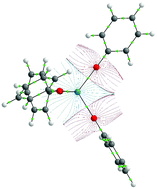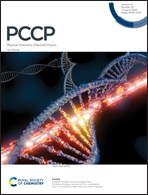Quantum chemical topology and natural bond orbital analysis of M–O covalency in M(OC6H5)4 (M = Ti, Zr, Hf, Ce, Th, Pa, U, Np)†
Abstract
Covalency is complex yet central to our understanding of chemical bonding, particularly in the actinide series. Here we assess covalency in a series of isostructural d and f transition element compounds M(OC6H5)4 (M = Ti, Zr, Hf, Ce, Th, Pa, U, Np) using scalar relativistic hybrid density functional theory in conjunction with the Natural Bond Orbital (NBO), quantum theory of atoms in molecules (QTAIM) and interacting quantum atoms (IQA) approaches. The IQA exchange–correlation covalency metric is evaluated for the first time for actinides other than uranium, in order to assess its applicability in the 5f series. It is found to have excellent correlation with NBO and QTAIM covalency metrics, making it a promising addition to the computational toolkit for analysing metal–ligand bonding. Our range of metrics agree that the actinide-oxygen bonds are the most covalent of the elements studied, with those of the heavier group 4 elements the least. Within the early actinide series, Th stands apart from the other three elements considered, being consistently the least covalent.

- This article is part of the themed collections: Celebrating the 200th Anniversary of the University of Manchester and Quantum Theory: The Challenge of Transition Metal Complexes


 Please wait while we load your content...
Please wait while we load your content...